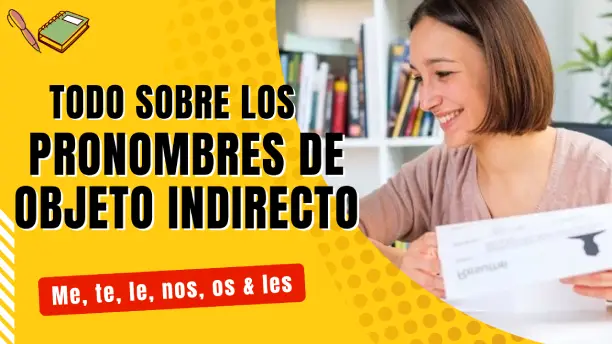Today, we will learn about indirect object pronouns. For instance, in English, you say:
I give her a book.
She tells me a story.
The words in bold (her, me) are indirect object pronouns. They tell us to whom or for whom the action happens. In Spanish, we also use indirect object pronouns. They are very useful because they avoid repeating nouns and make our sentences sound more natural.
Yo doy un regalo a María → Yo le doy un regalo. (I give a gift to María → I give her a gift.)
In the video below, you will see how the Indirect Object Pronouns work in Spanish.
Click here if you want to watch more videos from the Language Tutor.
What are the Indirect Object Pronouns in Spanish?
In English, the indirect object pronouns are “me, you, him, her, us, them”. In Spanish, the list is very similar, although with a few differences:
| Español | Inglés |
| me | (to) me |
| te | (to) you (informal) |
| le | (to) him / (to) her / (to) you (formal) |
| nos | (to) us |
| os | (to) you all (informal, in Spain) |
| les | (to) them / (to) you all (formal) |
👉 Important note: In English, we distinguish him and her, but in Spanish, we use “le” for both.
Where do they go?
In English, the indirect object pronoun usually comes after the verb, but in Spanish, the indirect object pronoun almost always goes before the verb:
Ella me da las llaves. (She gives me the keys.)
With infinitives or gerunds, the pronouns can be after the verbs:
Voy a explicarte la tarea. (I am going to explain the homework to you.)
Está contándonos una historia. (He/She is telling us a story.)
Compare the use of the pronouns in English and Spanish
El profesor les habla a los estudiantes. (The teacher talks to them.)
Mi madre me prepara la cena. (My mother prepares dinner for me.)
¿Te digo un secreto? (Shall I tell you a secret?)
Exercises with the Indirect Object Pronouns in Spanish
Now practice what you have learned with our quizzes.
Perhaps you would like to learn more about reflexive verbs and pronouns.
